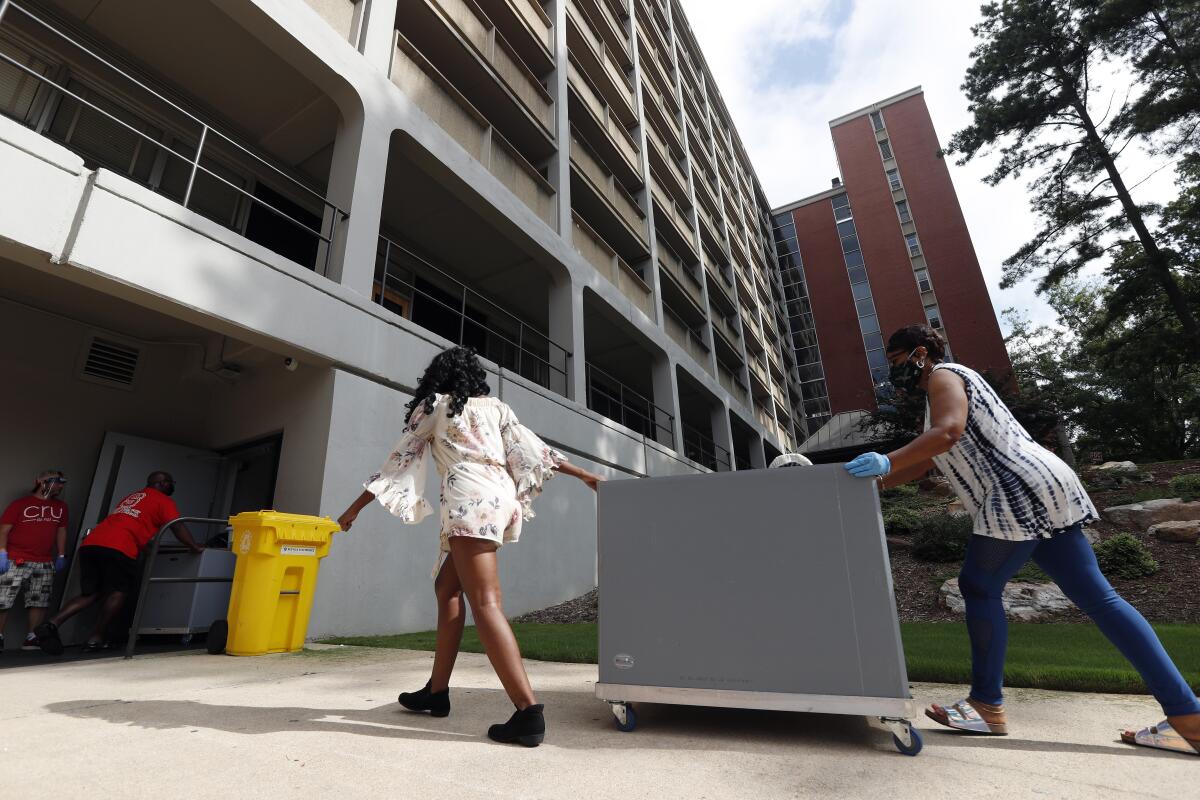Census: 1 in 5 dorms, prisons and nursing homes had no data at end of 2020 count

By the end of the U.S. head count last year, the Census Bureau had no data for almost a fifth of the nation’s occupied college dorms, nursing homes and prisons, requiring the statistical agency to make 11th-hour calls to facilities in an effort to collect information or use a last-resort statistical method to fill in gaps.
Residents of 43,000 of the 227,000 occupied dorms, prisons, military barracks, homeless shelters, group homes and nursing homes remained uncounted as late as December, according to new documents and slide presentations released recently by the Census Bureau in a Freedom of Information Act lawsuit filed by a Republican redistricting advocacy group.
The documents hint at the scope of the challenges the bureau faced in conducting the massive count in the midst of a global pandemic, an effort made more difficult by wildfires, hurricanes and attempts by the Trump administration to interfere with the census.
The facilities — known collectively to the bureau as group quarters — were among the most difficult places to count people during the 2020 census because the pandemic forced colleges to shut dorms and send students home, and nursing homes and other facilities restricted access in an effort to protect vulnerable residents from the virus.
The complex is erasing the Babylon-themed homage to D.W. Griffith, director of the racist film “The Birth of a Nation.”
Bureau officials are confident that they have since filled in the gaps using a statistical method they consider reliable, though they acknowledge that the challenge was formidable.
Census Bureau official Barbara LoPresti said recently that data collected from group quarters accounted for a large share of irregularities the statistical agency encountered, but the data processing “has not shown any critical errors in data collection that we could not fix.”
“Anomalies in processing aren’t errors, but they can turn into errors if we don’t evaluate them and fix them,” LoPresti said at a virtual meeting with outside experts who are evaluating the quality of the 2020 census data. “Our quality [check] process was therefore working.”
Fixing irregularities, though, forced the Census Bureau to delay the release of numbers used for divvying up congressional seats among states in a process known as apportionment. It also pushed back by five months the release of redistricting data used for redrawing congressional and legislative districts.
Though people living in group quarters account for a small share of the overall population — less than 3% of the 331 million people living in the U.S. — any inaccurate information can have a big impact on college towns or areas with a large prison population or a military base. That in turn can diminish representation in Congress and the amount of federal funding they are eligible to receive.
“Individual group quarters can be huge in some areas,” Connie Citro, a senior scholar at the Committee on National Statistics, said during the virtual meeting of outside experts.
The Republican advocacy group, Fair Lines America Foundation, sued the Census Bureau for information about how the group quarters count was conducted, saying it’s concerned about its accuracy and wants to make sure anomalies didn’t affect the state population figures used for apportionment. The apportionment numbers were released by the Census Bureau in April, and the redistricting numbers used for drawing congressional and legislative districts are being made public next month.
The group quarters count is under added scrutiny this census because the Census Bureau, for the first time, decided in the middle of crunching numbers to use a last-resort statistical technique called imputation to fill in the data gaps for the dorms, nursing homes and prisons. The method has been used for some time to fill in missing information on individual households.
“If the Census Bureau is permitted to conduct these sorts of methodology changes and implementations behind closed doors ... electoral chaos may result from the states’ reliance on potentially defective numbers in conducting redistricting,” Fair Lines said in court papers.
In addition to the 43,000 group quarter addresses that lacked data in December, an additional 3,500 addresses had counts that were implausible because they were listed as having zero people or were much too high, suggesting there were duplicates. Statisticians removed duplicates, such as college students who were counted at both their dorms and parents’ homes, the documents said.
If they didn’t have any information about residents in a dorm, nursing home or prison, Census Bureau statisticians applied information they already knew about the facility, either from previous surveys, earlier contacts or administrative records, to arrive at the count.
After imputation and duplicate removal, the revised numbers appeared to artificially inflate the count for group quarters by 444,000 people. Instead of an expected 8.1 million residents living in group quarters, there were almost 8.6 million people. The group quarters count in the revised data was noticeably higher for California, New York, Florida and Washington state, the documents and slide presentations showed.
The Census Bureau said in a statement that the numbers in the documents weren’t the final figures and that the 444,000-person difference was addressed in later number-crunching. The statistical agency didn’t say what the final figures were or provide details about how the difference was handled.
“The Census Bureau made several improvements to its methodology after the date these slides were created,” the statement said.
More to Read
Sign up for Essential California
The most important California stories and recommendations in your inbox every morning.
You may occasionally receive promotional content from the Los Angeles Times.











